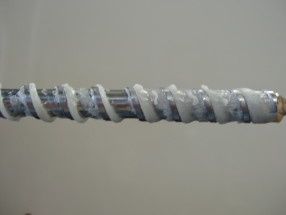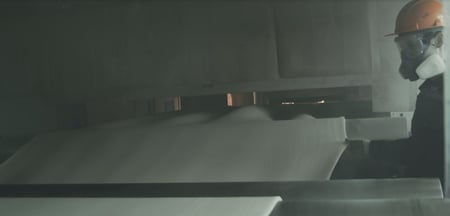
I often receive a phone calls from customers who have a problem that needs fixing. Yet very rarely am I approached by a customer looking for preventative action.
I am a firm believer of being proactive, however most of the time we do not see the issues ahead until we are knee deep in them. In these cases, it is never enough to just tackle the issue at hand, but we should also prevent it from reoccurring in the future. I do this, by carrying out a simple “Root cause Analysis” to identify the cause of any problem.
For example, I have many customers who experience a lot of issues when producing a clear part. When manufacturing dark colors, small imperfections may go un-noticed, but the clear parts are having a much higher rejection rate. Some processors will therefore deem it only necessary to use purge compounds when they are changing from dark to light/clear colors, and do not purge where dark colors are involved. You may not need to purge for every single changeover, however if you leave it too long between each purge, it may cause you to run into difficulties later. If you are not purging over a long period of time, it can lead to a build-up of residue on the screw, which will be a lot more difficult to remove if allowed to degrade and cause contamination.
Although selective purging may sometimes help fix a problem at hand, it is only as effective as mopping up a spill from a leak in the roof, without ever fixing the leak. Not addressing the root cause of the problem, is not a productive use of anyone’s time.
To get to the root cause of an issue, always ask yourself, "WHY?"
- WHY are you getting higher rejection rates?
- Black specks (degraded residue from previous resin) is coming away from the screw and contaminating your production resin/parts.
- WHY is there contamination on the screw?
- There has been a build-up of residue from previously processed resins on the screw, left to degrade over a period of time. While the residue is subject to heating and re-heating as well as oxygen entering the barrel- it has caused the residue to degrade.
- WHY do we get residue on the screw?
- If the screw and barrel are not cleaned adequately following a resin or color change- residue will remain inside the barrel, making it susceptible to degradation.
Step 1: Solve: To tackle contamination, a stubborn (glass filled) purge or a chemical purge compound will be required to remove the contamination. Note: This may mean longer purge times and in some cases you will need to pull the screw.
Step 2: Prevent: Once processing with a clean screw, ensure that a routine (regular) purge process is in place for change-overs moving forward, including sealing the equipment at shutdowns. Being proactive with a purging routine will mean quick and easy changeovers, maintaining a clean screw, prevention of black specks from occurring and and it will also reduce the need for time consuming screw pulls or soak times, in the future.
I always like to encourage processors to be proactive in their thinking, as prevention is always the best (and cheapest) method, whereas reacting to a problem will always be more time consuming and costly to fix.
Ready to reduce your production downtime to protect your profits? Learn more about how purging compounds and process efficiency work in tandem.

Kiran Raza is an Asaclean Purging Expert & Technical Sales Representative. She's worked in the plastics industry for nearly 20 years and has expertise In Bio-Medical Materials, Polymer Processing, and Materials Testing.







Comments